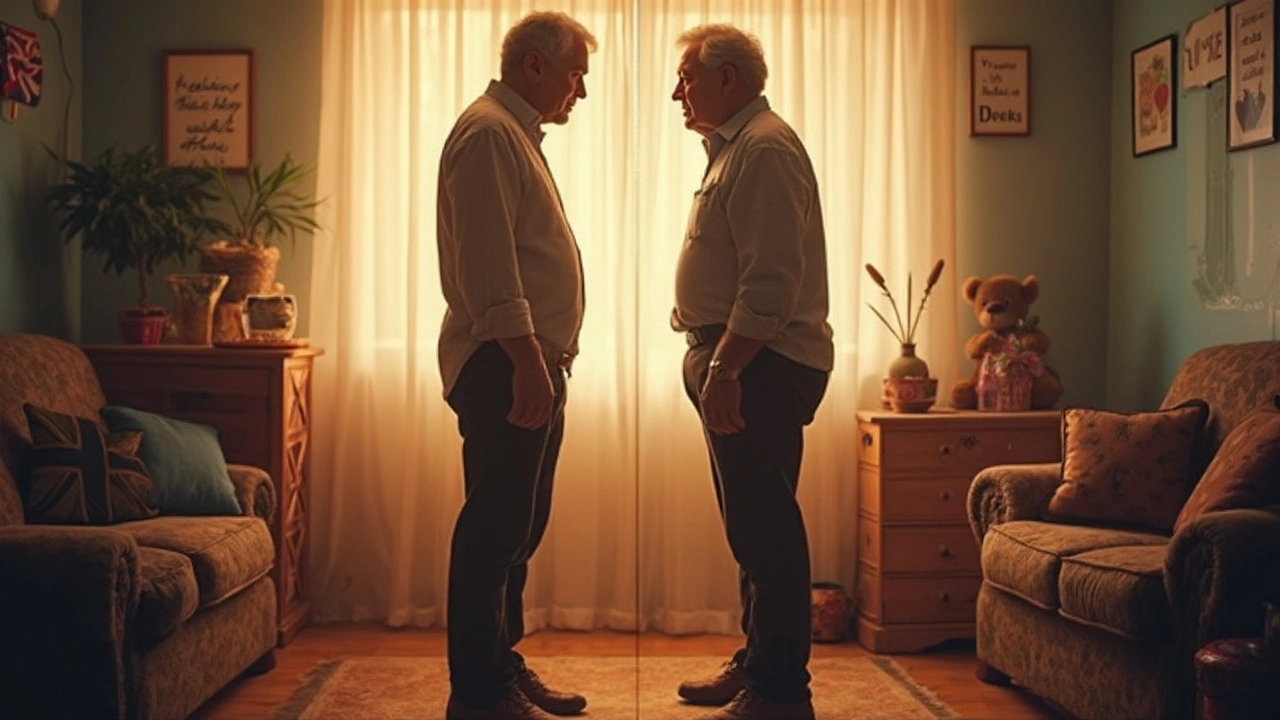Rolfing sounds weird at first—kind of like a new dog trick I could teach my golden retriever, Betty. But nope, Rolfing is all about changing how your body moves and feels. It’s a type of ‘structural integration,’ meaning someone uses their hands to work through your muscles and fascia (that’s the sticky stuff keeping your muscles together). The idea is simple: when your fascia is stuck or twisted, your body just doesn’t work well. Posture gets worse, aches become normal, and your energy runs out faster than your phone battery at a theme park.
People don’t try Rolfing because it sounds nice—they try it when regular stretching, massage, or even trips to the chiropractor aren’t cutting it. What stands out about Rolfing is how deep it goes. The sessions aren’t always relaxing. You might even feel some discomfort at first! But plenty of folks say it’s the kind of ‘good pain’ that opens up tight spots you forgot you even had. Interested in how it could change your daily life, or maybe just help you stand up straighter? You’re in the right spot.
- What on Earth Is Rolfing?
- From Couch Potato to Feeling Brand New
- How Rolfing Actually Works
- Simple Tips If You Want to Try It
What on Earth Is Rolfing?
Here’s the nuts and bolts: Rolfing is a form of bodywork, kind of like massage, but louder and way more focused on structure. It was created by Dr. Ida Rolf, a biochemist and true pioneer, back in the 1940s. Her idea was simple—when your body is out of alignment with gravity, you don’t just slouch, you also set yourself up for discomfort and long-term pain. Rolfing aims to fix that, starting with the connective tissue called fascia. Fascia is this sticky web under your skin, wrapping around everything and keeping your muscles, bones, and organs in place.
What makes rolfing different is that it zeroes in on the entire body, not just sore spots. So instead of chasing pain around, a Rolfer looks at how you walk, sit, and even how you stand when you’re just waiting in line for coffee. They use steady pressure—sometimes deep—to lengthen and loosen the fascia. Weird as it sounds, this helps your body 'stack up' better, which can mean less back pain, more flexibility, and better posture all around.
Check out this data showing how folks felt after a typical series of 10 Rolfing sessions:
| Benefit | % Reporting Improvement |
|---|---|
| Posture | 78% |
| Flexibility | 70% |
| Chronic Pain Relief | 61% |
| Energy & Mood | 54% |
The classic Rolfing process is called the 'Ten Series,' where each session tackles a different part of your body. You don’t need to be in pain to go—some people do it just to feel lighter and more balanced. Here’s what usually happens in the first few sessions:
- Session 1: Boosts breathing and loosens up your upper body.
- Session 2: Focuses on your feet and lower legs, building your support base.
- Session 3: Lines up your sides, from hips to shoulders.
Rolfers often snap 'before and after' photos or use postural checkpoints, so you see visible changes, not just feel them. Some insurance plans in the US even cover it as alternative medicine—worth checking if you’re thinking about trying it out for pain, posture, or just plain curiosity.
From Couch Potato to Feeling Brand New
Imagine what it’s like to go from avoiding stairs to running after your dog at the park. That’s the type of change many people share after trying rolfing. I’ll use Jenn’s story as an example—because the details matter. Jenn worked from home, spent hours at her desk, and by age 36, her lower back pain was a daily drama. She tried physical therapy, changed her chair three times, but nothing really stuck.
When Jenn walked into her first Rolfing session, she rated her pain a solid 8 out of 10. The practitioner asked about her habits, checked her posture, then got to work on her lower back and hips. After two sessions, Jenn noticed standing felt easier. By the end of the classic ten-session Rolfing series, she went from taking painkillers daily to needing them maybe once a week. She also slept better—her shoulders stopped rising toward her ears each night. That’s not rare, either; a 2022 survey by the Rolf Institute showed 78% of people noticed better movement by the fifth session.
Check out how some of the biggest changes stack up for folks like Jenn:
| Before Rolfing | After Rolfing (10 sessions) |
|---|---|
| Slouched sitting posture | Noticeably straighter, relaxed shoulders |
| Chronic lower back pain | Reduced pain; less medication |
| Poor sleep from discomfort | Deeper, easier sleep |
| Low energy/dreading activity | Regular walks, more active lifestyle |
Nothing about these changes is magic. Rolfing helps your body find its natural balance, which frees up energy you forgot you had. The trick is sticking with the process—the results come session by session. Don’t expect to feel perfect after one appointment. If you’re trying to get moving again or just want your body to feel less stiff, those first improvements are a really good sign that more gains are coming. And yeah, Betty the dog loves her new running buddy.

How Rolfing Actually Works
Let’s get into what actually happens during Rolfing. This isn’t just a back rub. Rolfing is a hands-on process where a certified Rolfer uses firm pressure and slow movements to target your connective tissue, which is called fascia. That’s the webby stuff running all through your body, kind of like the netting in an orange that holds everything together. If your fascia is tight, it can bunch up muscles and pull your posture out of whack.
Sessions happen on a table, similar to massage, but the Rolfer checks how you stand, walk, and sit first. They look for spots where you seem locked up or tilted. You might even be asked to move or breathe in certain ways during the session, and the Rolfer follows your body’s “story”—they track where tension shifts as they work.
There’s a classic 10-session ‘recipe’ that most people try, but you can do fewer (or more), depending on your goals. Each session focuses on different body regions—shoulders, hips, legs, and so on. The idea is to get everything lined up and balanced, so you’re not fighting against yourself on a daily basis.
- Session 1: Loosen breathing and free your ribcage
- Session 2–4: Unwind tension in the lower and upper body separately
- Sessions 5–7: Work on the core—think pelvis and deep back muscles
- Sessions 8–10: Balance the entire system so it moves as one smooth unit
What’s really different is the focus on long-term change. Rolfing aims to teach your body a new way of standing and moving, not just ease symptoms for a day. People often notice they stand taller or walk differently—sometimes after just a couple sessions.
One well-known Rolfer, Tom Myers (author of ‘Anatomy Trains’), summed it up:
“It’s not about breaking up tissue; it’s about freeing what’s stuck so people can move, breathe, and live better.”
Rolfing can be intense, but clients say the long-term payoff is worth it. It’s especially popular with athletes, yoga lovers, dancers, and even regular folks who spend too much time slumped over a laptop. If pain or bad posture keeps coming back, rolfing goes deeper than regular massage to fix the actual cause, not just the symptoms.
Simple Tips If You Want to Try It
Before you even book your first session, there are a few things worth knowing about rolfing. First, make sure you're seeing a certified Rolfer. Not everyone offering bodywork is trained in the real deal. Look for someone with training from the Dr. Ida Rolf Institute or a similar recognized school. It's also smart to check reviews and maybe ask your physical therapist or chiropractor if they know any local pros. Don’t be shy—they’ve usually heard it all.
People often want to know how many sessions they’ll need. The classic Rolfing series is 10 sessions, spaced out over a few months. Each session has a different focus, and you don’t want to rush it. Some folks feel a change after just one, but deeper shifts take time. Rolfing isn’t usually covered by insurance in most places, so plan for that. Here’s a quick look at what folks typically report spending and experiencing:
| Typical Number of Sessions | Cost per Session (USD) | How Long a Session Takes |
|---|---|---|
| 10 | $120 - $180 | 60 - 75 min |
Wear comfy, loose clothes—nothing restrictive. You’ll move around during the session and your Rolfer needs to see how your body aligns. Don’t try to fix your posture for them; just walk in how you walk and sit how you sit. Honesty helps them help you.
Some tips to get the best out of each visit:
- Drink plenty of water before and after sessions. It helps your body flush out toxins (yep, that’s a thing) as your fascia loosens up.
- Try not to schedule heavy workouts right afterwards. Give your body time to adapt to its new alignment.
- Jot down notes about how you feel each day. It’s surprising what shifts when you start paying attention.
- Mild soreness is normal, kind of like after a deep stretch or a tough workout. Let your Rolfer know how you’re feeling as you go.
- If something hurts in the wrong way, speak up! Communication makes all the difference.
Last thing: don’t expect a magic overnight change. Everyone’s different, but studies show people usually report real progress by session five or six. And if you’re like me and spend half your day hunched over a laptop (with your dog nosing your elbow), you’ll be surprised how much lighter you feel after a few weeks.

